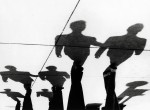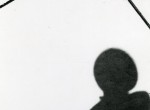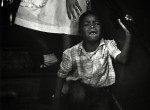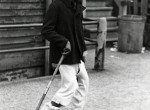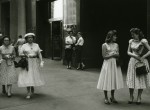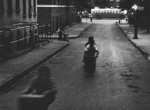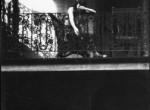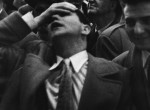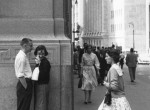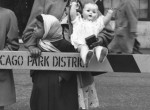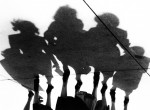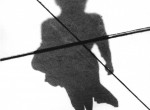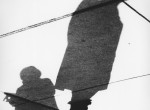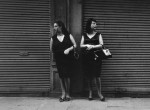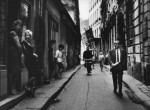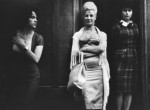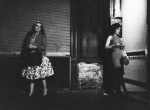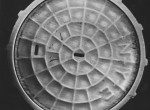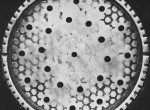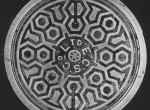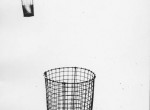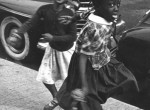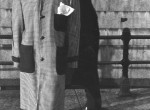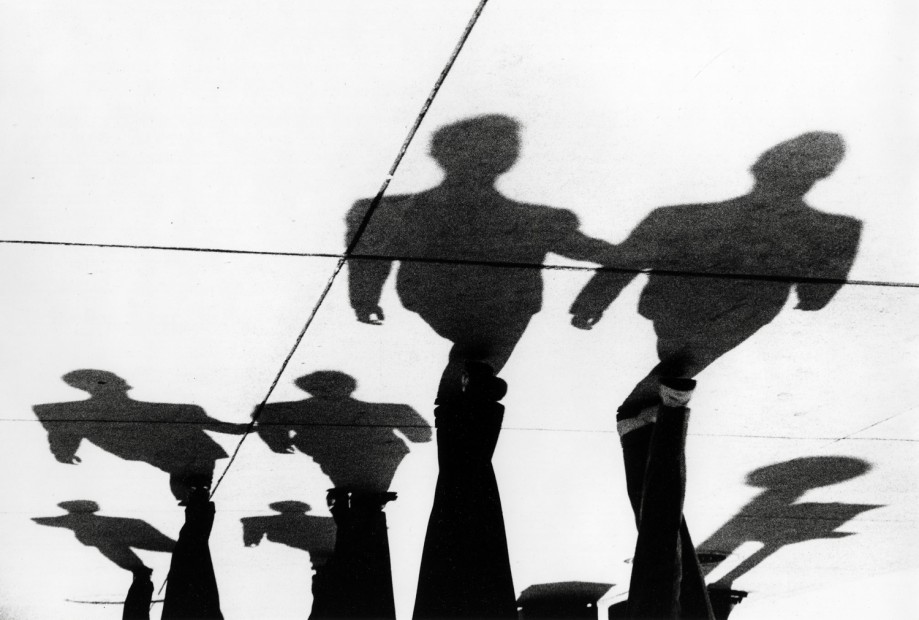 Shadow, Chicago, 1951Gelatin silver photograph. Signed, dated and stamped on print verso.Contact For Pricing & Availability
Shadow, Chicago, 1951Gelatin silver photograph. Signed, dated and stamped on print verso.Contact For Pricing & Availability
9 1/8 X 13 3/8 inches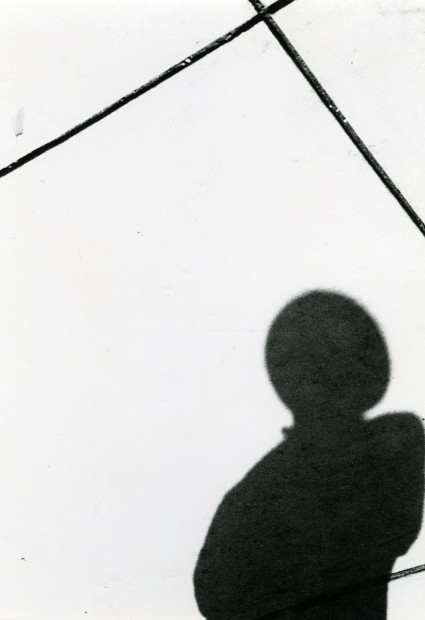 Shadow, Chicago, 1951Gelatin silver photograph. 1950s print. Signed, stamped & dated on mount verso.Contact For Pricing & Availability
Shadow, Chicago, 1951Gelatin silver photograph. 1950s print. Signed, stamped & dated on mount verso.Contact For Pricing & Availability
7 11/16 X 5 7/16 inches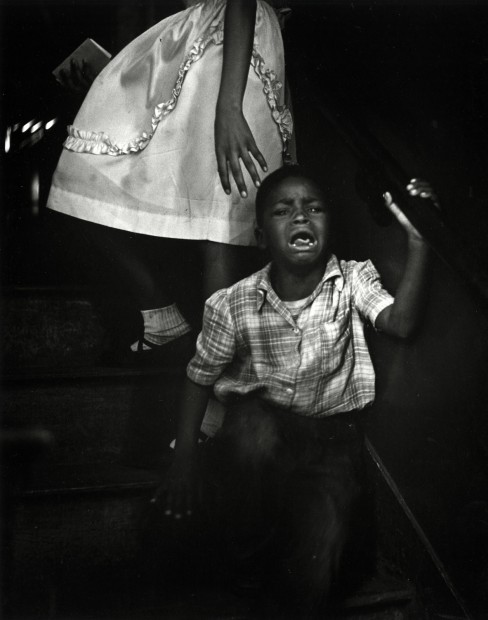 Firman House, 1950Gelatin silver photograph. 1950s print. Signed, titled and dated on mount verso, artist label on mount margin recto.Contact For Pricing & Availability
Firman House, 1950Gelatin silver photograph. 1950s print. Signed, titled and dated on mount verso, artist label on mount margin recto.Contact For Pricing & Availability
9 7/16 X 7 1/2 inches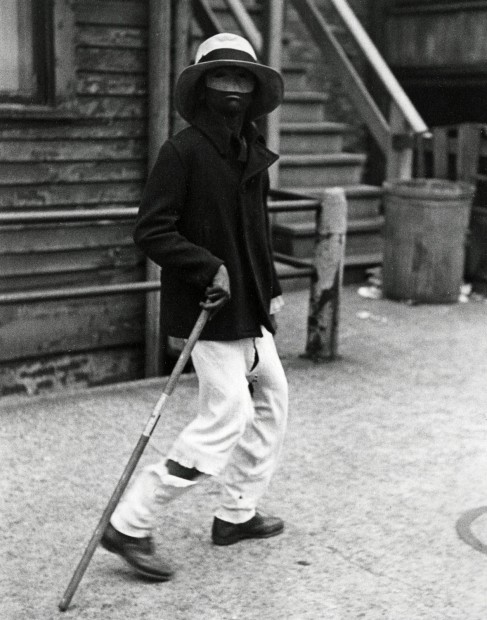 Untitled, 1951Gelatin silver photograph. Early 1950s print. Signed, dated with stamp on print verso.Contact For Pricing & Availability
Untitled, 1951Gelatin silver photograph. Early 1950s print. Signed, dated with stamp on print verso.Contact For Pricing & Availability
4 11/16 X 3 5/8 inches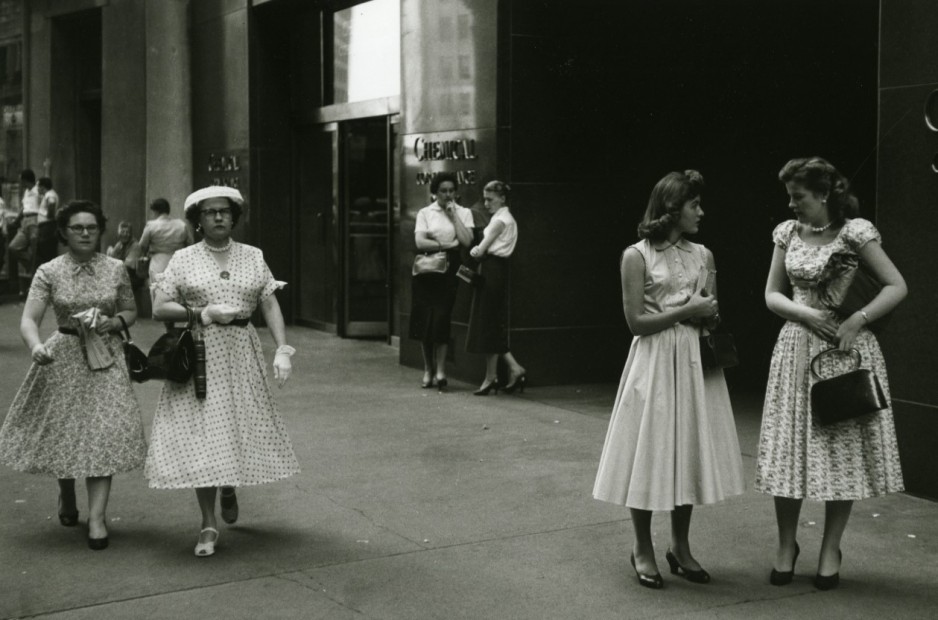 Broad Street, 1956Gelatin silver photograph. Later print. Signed and dated by artist in pencil and stamped with artist stamp "Marvin E. Newman, 561 Broadway" and "Exhibition Print" on print verso.Contact For Pricing & Availability
Broad Street, 1956Gelatin silver photograph. Later print. Signed and dated by artist in pencil and stamped with artist stamp "Marvin E. Newman, 561 Broadway" and "Exhibition Print" on print verso.Contact For Pricing & Availability
13 1/8 X 9 inches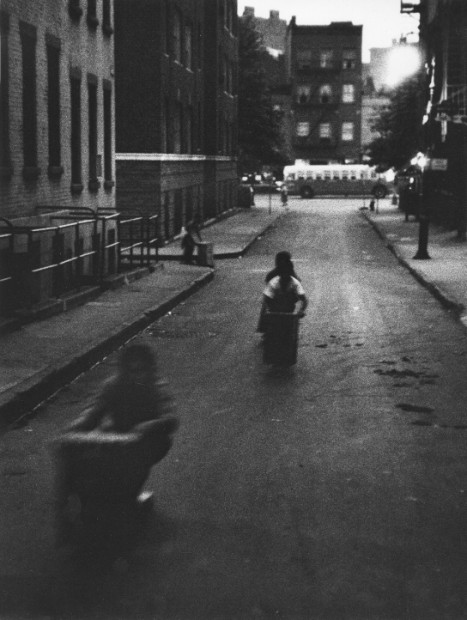 Untitled, 1955Gelatin silver photograph. 1955 print. Signed and dated by artist in pencil and stamped with aritst stamp "Marvin E. Newman, 561 Broadway" "Marvin E. Newman, 251 W 89 St" and "Exhibition Print" on print verso.Contact For Pricing & Availability
Untitled, 1955Gelatin silver photograph. 1955 print. Signed and dated by artist in pencil and stamped with aritst stamp "Marvin E. Newman, 561 Broadway" "Marvin E. Newman, 251 W 89 St" and "Exhibition Print" on print verso.Contact For Pricing & Availability
13 1/4 X 10 inches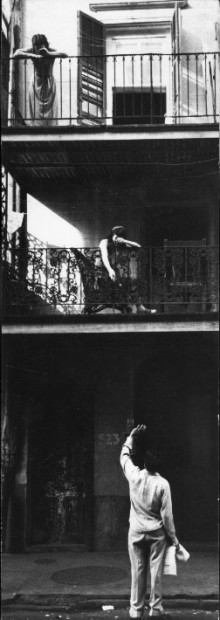 Untitled, 1954Gelatin silver photograph on mount. 1954 print. Signed and dated by artist in pencil and stamped with aritst stamp "Marvin E. Newman, 561 Broadway," and "Exhibition Print" on print verso.Contact For Pricing & Availability
Untitled, 1954Gelatin silver photograph on mount. 1954 print. Signed and dated by artist in pencil and stamped with aritst stamp "Marvin E. Newman, 561 Broadway," and "Exhibition Print" on print verso.Contact For Pricing & Availability
4 1/2 X 12 7/8 inches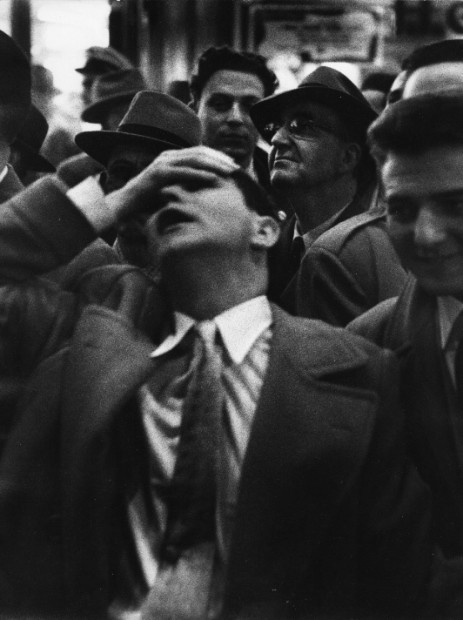 Untitled, 1955Gelatin silver photograph. 1955 print. Signed and dated by artist in pencil and stamped with aritst stamp "Marvin E. Newman, 561 Broadway," red "Marvin E. Newman" and "Exhibition Print" on print verso.Contact For Pricing & Availability
Untitled, 1955Gelatin silver photograph. 1955 print. Signed and dated by artist in pencil and stamped with aritst stamp "Marvin E. Newman, 561 Broadway," red "Marvin E. Newman" and "Exhibition Print" on print verso.Contact For Pricing & Availability
13 X 9 3/4 inches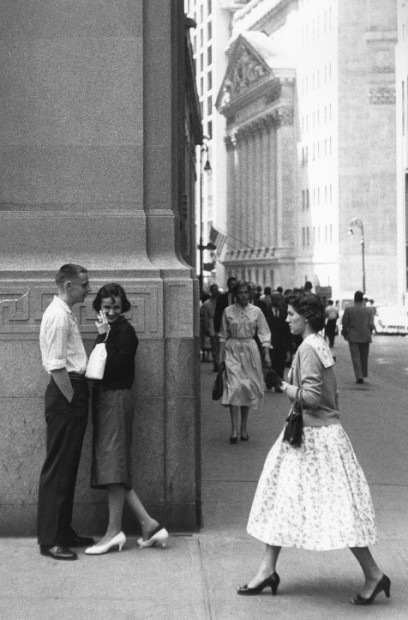 Untitled, 1956Gelatin silver photograph. 1956 print. Signed and dated by artist in pencil and stamped with aritst stamp "Marvin E. Newman, 561 Broadway" "Marvin E. Newman, 251 W 89 St" and "Exhibition Print" on print verso.Contact For Pricing & Availability
Untitled, 1956Gelatin silver photograph. 1956 print. Signed and dated by artist in pencil and stamped with aritst stamp "Marvin E. Newman, 561 Broadway" "Marvin E. Newman, 251 W 89 St" and "Exhibition Print" on print verso.Contact For Pricing & Availability
13 5/16 X 8 3/4 inches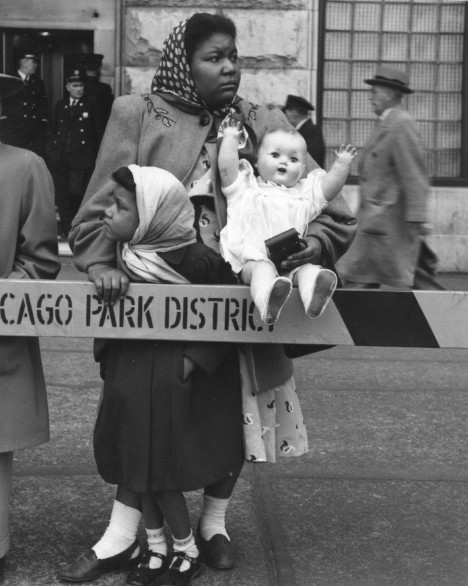 Untitled, Chicago, 1951Gelatin silver photograph. 1950s print. Signed and dated by artist in pencil and stamped with aritst stamp "Marvin E. Newman" and "Exhibition Print" on print verso.Contact For Pricing & Availability
Untitled, Chicago, 1951Gelatin silver photograph. 1950s print. Signed and dated by artist in pencil and stamped with aritst stamp "Marvin E. Newman" and "Exhibition Print" on print verso.Contact For Pricing & Availability
4 9/16 X 3 11/16 inches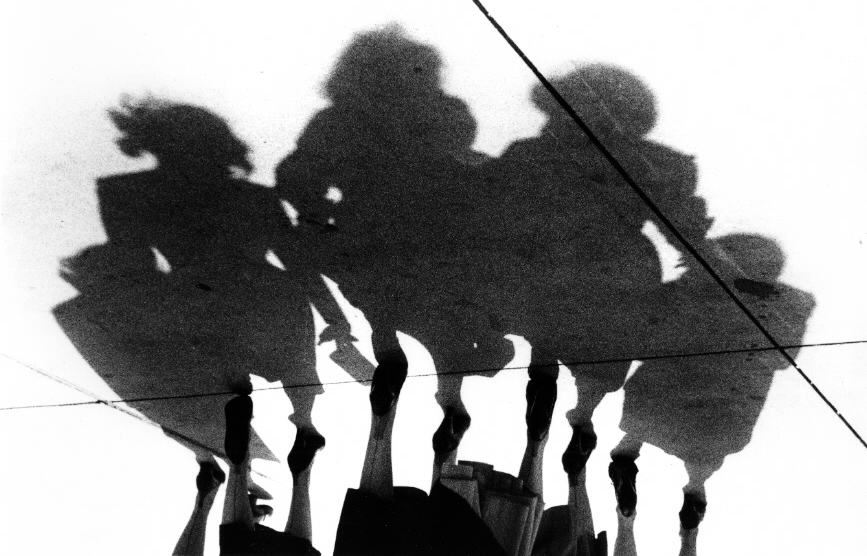 Untitled, 1951Gelatin silver photograph. Later print. Signed by artist in pencil and stamped with aritst stamp "Marvin E. Newman" and "Exhibition Print" on print verso.Contact For Pricing & Availability
Untitled, 1951Gelatin silver photograph. Later print. Signed by artist in pencil and stamped with aritst stamp "Marvin E. Newman" and "Exhibition Print" on print verso.Contact For Pricing & Availability
8 5/8 X 13 1/2 inches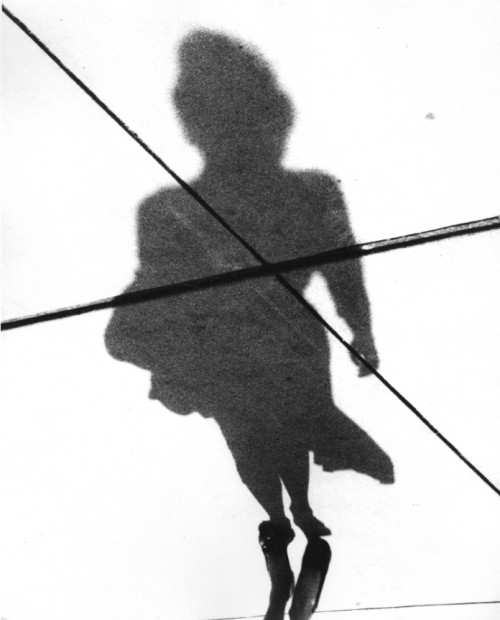 Untitled, 1951Gelatin silver photograph. Later print. Signed and dated by artist in pencil and stamped with aritst stamp "Marvin E. Newman" and "Exhibition Print" on print verso.Contact For Pricing & Availability
Untitled, 1951Gelatin silver photograph. Later print. Signed and dated by artist in pencil and stamped with aritst stamp "Marvin E. Newman" and "Exhibition Print" on print verso.Contact For Pricing & Availability
9 3/8 X 7 1/2 inches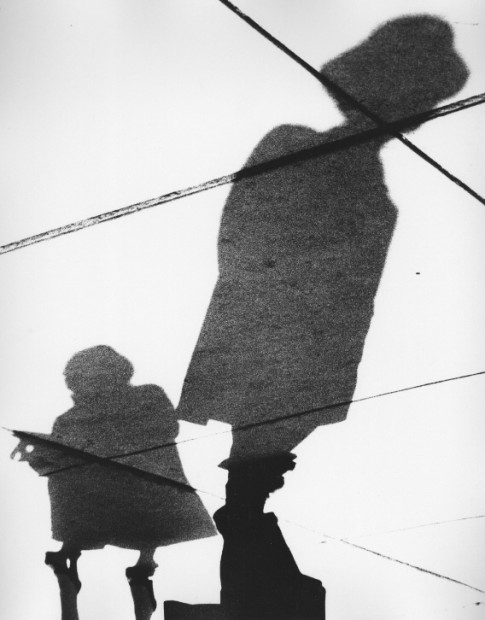 Untitled, 1951Gelatin silver photograph. Later print. Signed and dated by artist in pencil and stamped with aritst stamp "Marvin E. Newman" and "Exhibition Print" on print verso.Contact For Pricing & Availability
Untitled, 1951Gelatin silver photograph. Later print. Signed and dated by artist in pencil and stamped with aritst stamp "Marvin E. Newman" and "Exhibition Print" on print verso.Contact For Pricing & Availability
9 1/2 X 7 1/2 inches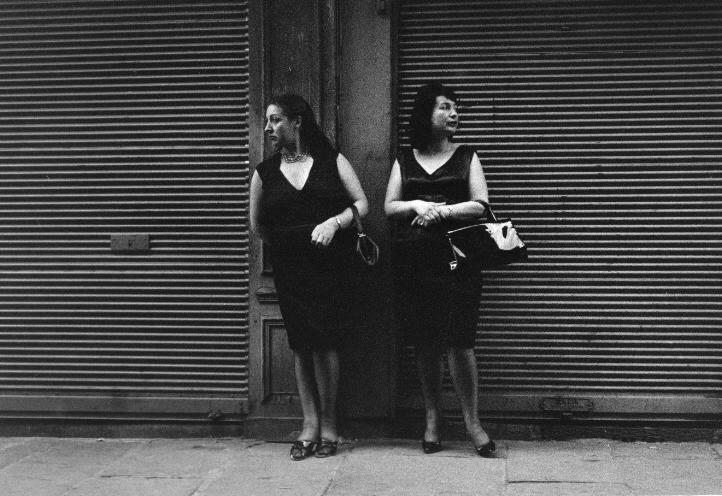 Rue Saint-Denis, Paris, 1960Gelatin silver photograph. 1960 print on exhibition-ready chipboard mount with hanger. Signed and dated by artist in pen and stamped with aritst stamp on mount verso.Contact For Pricing & Availability
Rue Saint-Denis, Paris, 1960Gelatin silver photograph. 1960 print on exhibition-ready chipboard mount with hanger. Signed and dated by artist in pen and stamped with aritst stamp on mount verso.Contact For Pricing & Availability
16 15/16 X 23 inches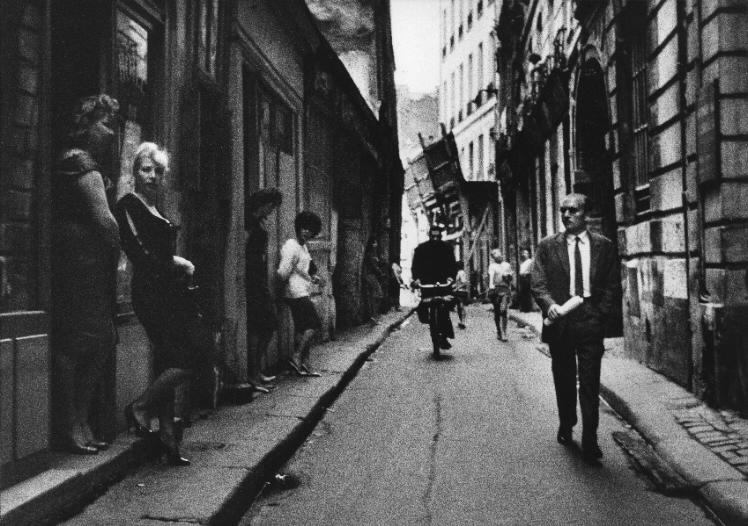 Rue Saint-Denis, Paris, 1960Gelatin silver photograph. 1960 print on exhibition-ready chipboard mount with hanger. Signed and dated by artist in pen and stamped with aritst stamp on mount verso.Contact For Pricing & Availability
Rue Saint-Denis, Paris, 1960Gelatin silver photograph. 1960 print on exhibition-ready chipboard mount with hanger. Signed and dated by artist in pen and stamped with aritst stamp on mount verso.Contact For Pricing & Availability
13 5/8 X 17 7/8 inches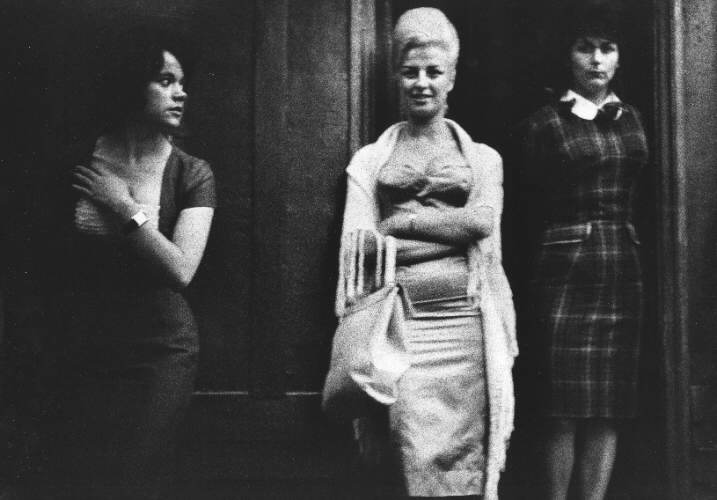 Rue Saint-Denis, Paris, 1960Gelatin silver photograph. 1960 print on exhibition-ready chipboard mount with hanger. Signed and dated by artist in pen and stamped with aritst stamp on mount verso.Contact For Pricing & Availability
Rue Saint-Denis, Paris, 1960Gelatin silver photograph. 1960 print on exhibition-ready chipboard mount with hanger. Signed and dated by artist in pen and stamped with aritst stamp on mount verso.Contact For Pricing & Availability
11 3/8 X 16 3/8 inches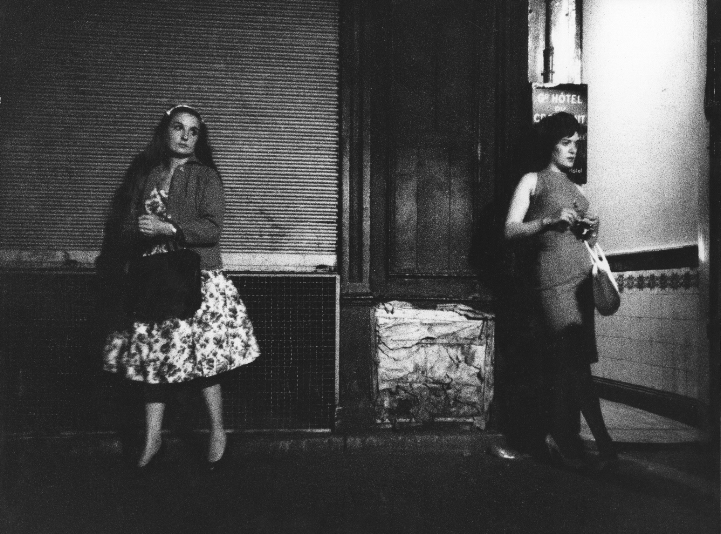 Rue Saint-Denis, Paris, 1960Gelatin silver photograph. 1960 print on exhibition-ready chipboard mount with hanger. Signed and dated by artist in pen and stamped with aritst stamp on mount verso.Contact For Pricing & Availability
Rue Saint-Denis, Paris, 1960Gelatin silver photograph. 1960 print on exhibition-ready chipboard mount with hanger. Signed and dated by artist in pen and stamped with aritst stamp on mount verso.Contact For Pricing & Availability
10 X 13 7/16 inches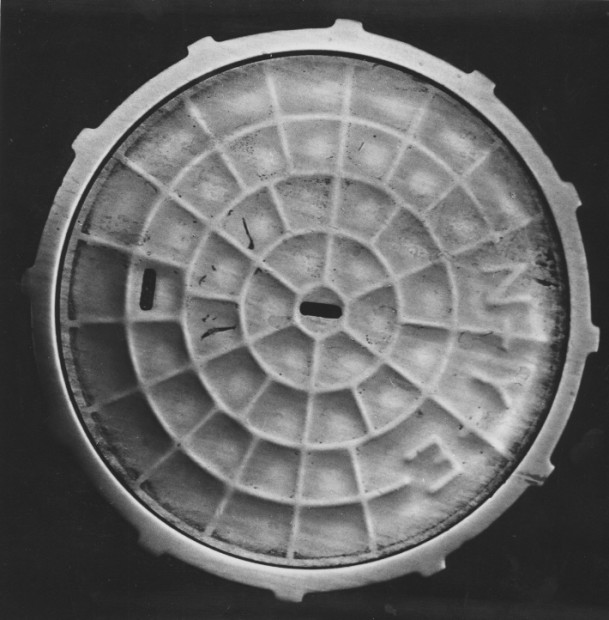 Untitled, 1952Gelatin silver photograph. 1950s print. Signed and dated by artist in pencil and stamped with artist stamp "561 Broadway," "753 East Tremont" and "Exhibition Print" on print verso. Also, various numerical annotations on print verso.Contact For Pricing & Availability
Untitled, 1952Gelatin silver photograph. 1950s print. Signed and dated by artist in pencil and stamped with artist stamp "561 Broadway," "753 East Tremont" and "Exhibition Print" on print verso. Also, various numerical annotations on print verso.Contact For Pricing & Availability
6 5/8 X 6 1/2 inches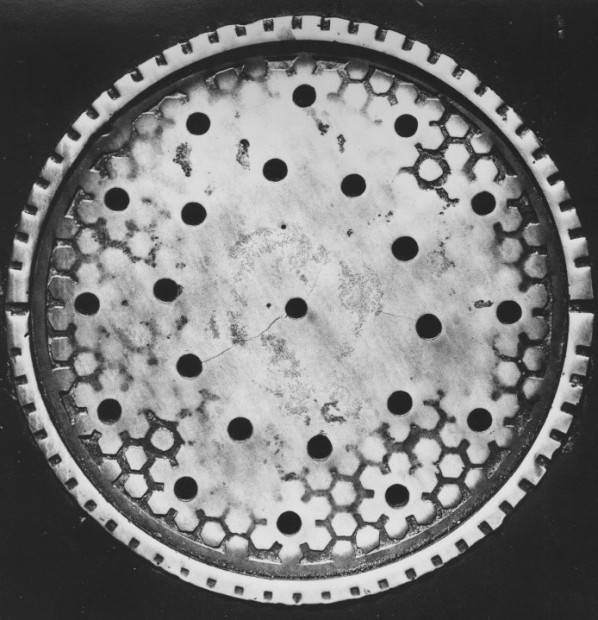 Untitled, 1952Gelatin silver photograph. 1950s print. Signed and dated by artist in pencil and stamped with artist stamp "561 Broadway," "753 East Tremont" and "Exhibition Print" on print verso. Annotated "CT + ES access to power cables. Consolidated Telegraph + Elec.Contact For Pricing & Availability
Untitled, 1952Gelatin silver photograph. 1950s print. Signed and dated by artist in pencil and stamped with artist stamp "561 Broadway," "753 East Tremont" and "Exhibition Print" on print verso. Annotated "CT + ES access to power cables. Consolidated Telegraph + Elec.Contact For Pricing & Availability
6 5/8 X 6 1/2 inches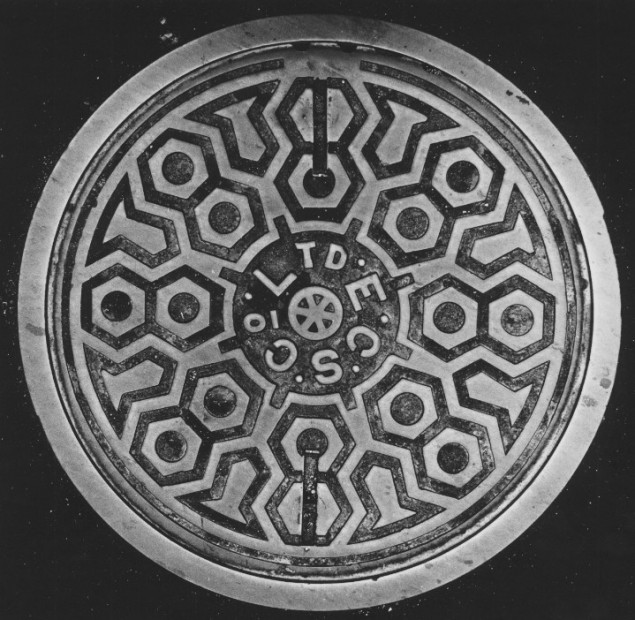 Untitled, 1952Gelatin silver photograph. 1950s print. Signed and dated by artist in pencil and stamped with artist stamp "561 Broadway" and "Exhibition Print" on print verso.Contact For Pricing & Availability
Untitled, 1952Gelatin silver photograph. 1950s print. Signed and dated by artist in pencil and stamped with artist stamp "561 Broadway" and "Exhibition Print" on print verso.Contact For Pricing & Availability
6 1/2 X 6 5/8 inches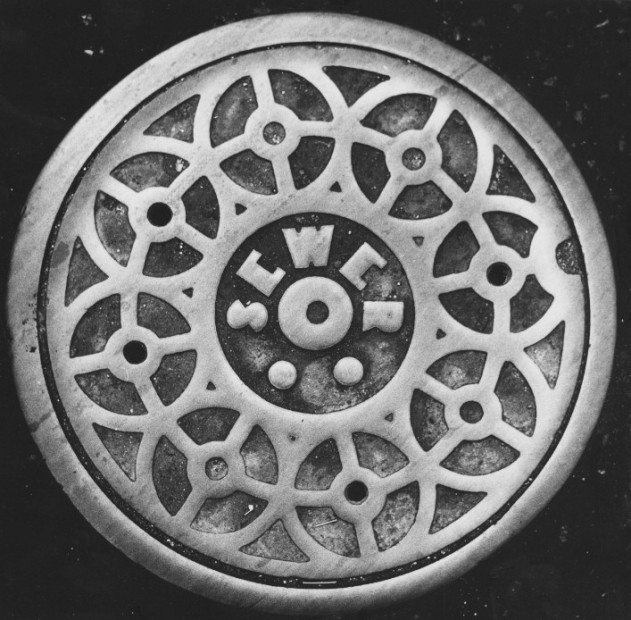 Untitled, 1952Gelatin silver photograph. 1950s print. Signed and dated by artist in pencil and stamped with artist stamp and "Exhibition Print" and "561 Broadway" on print verso.Contact For Pricing & Availability
Untitled, 1952Gelatin silver photograph. 1950s print. Signed and dated by artist in pencil and stamped with artist stamp and "Exhibition Print" and "561 Broadway" on print verso.Contact For Pricing & Availability
6 1/2 X 6 5/8 inches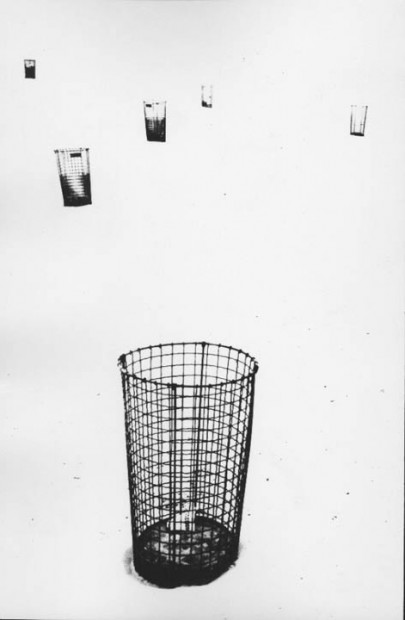 Untitled, 1952Gelatin silver photograph. 1950s print. Artist stamp twice on print verso. Also dated, and signed pencil by artist on print verso Also various annotations in pencil on print verso.Contact For Pricing & Availability
Untitled, 1952Gelatin silver photograph. 1950s print. Artist stamp twice on print verso. Also dated, and signed pencil by artist on print verso Also various annotations in pencil on print verso.Contact For Pricing & Availability
6 7/16 X 10 inches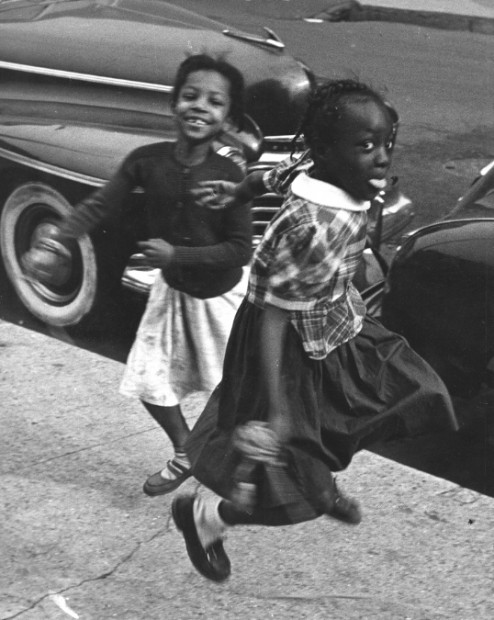 Untitled, Chicago, 1951Gelatin silver photograph. 1950s print. Signed and dated by artist with annotations on mount verso, typed label 'Marvin Newman' on mount margin recto.Contact For Pricing & Availability
Untitled, Chicago, 1951Gelatin silver photograph. 1950s print. Signed and dated by artist with annotations on mount verso, typed label 'Marvin Newman' on mount margin recto.Contact For Pricing & Availability
9 1/2 X 7 9/16 inches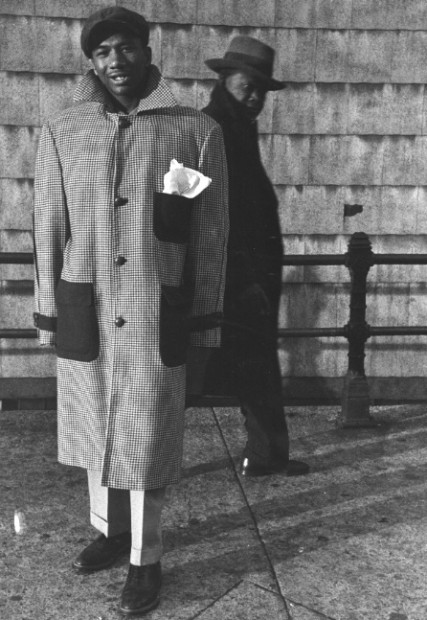 Untitled, Chicago, 1951Gelatin silver photograph. 1950s print. Signed and dated in pencil by artist, with artist '561 Broadway' and 'Exhibition Print' stamps on print verso.Contact For Pricing & Availability
Untitled, Chicago, 1951Gelatin silver photograph. 1950s print. Signed and dated in pencil by artist, with artist '561 Broadway' and 'Exhibition Print' stamps on print verso.Contact For Pricing & Availability
9 1/8 X 6 3/8 inches
Marvin E. Newman
Marvin E. Newman (December 5, 1927-September 13, 2023) went to Brooklyn College at age 16 to study economics and become an artist. There he initially studied sculpture with Burgoyne Diller, but shortly after switched to taking photography courses with Walter Rosenblum and Berenice Abbott. Upon graduation and at Rosenblum’s urging, Newman became a member of the Photo League of New York, where he took classes with John Ebstel. In the fall of 1949 Newman went to Chicago to study with Harry Callahan at the Institute of Design (ID) and was the first student there to earn a Master’s Degree in Photography (1952). Newman often photographed in the streets of Chicago with fellow student, Yasuhiro Ishimoto. This began a lifelong friendship. Together, they made an experimental film The Church on Maxwell Street (1951) which documented the sights and sounds of a sidewalk revivalist church in Chicago’s fabled marketplace. Newman’s Master’s thesis, “A Creative Analysis of the Series Form in Still Photography,” explored repeated forms in series, including children’s faces, people in similar positions and poses, and inverted human shadows on the sidewalk. He, along with Aaron Siskind and Edward Wallowitch, were the only photographers known to be active in both the Photo League in New York and the ID in Chicago. This fact is ever present in Marvin’s work. It combines the visual acuity of an Institute of Design artist and the compassionate eye and deep connection to people characteristic of the Photo League.
After returning to New York, in 1953 Newman was included in “Always the Young Strangers,” an important group show at the Museum of Modern Art, New York, curated by Edward Steichen. Roy DeCarava, Saul Leiter, and Leon Levinstein exhibited alongside Newman and were introduced as a new generation of American photographic talent. Unlike some of his fellow graduates, Newman did not pursue teaching as a career, but followed the path of photojournalism. He became a contributing photographer for Sport Magazine in 1953, Sports Illustrated in 1954, and later shot for Life, Look, Newsweek, Smithsonian and Esquire. In 1954 he was sent to Alaska by Fortune Magazine on assignment. He used this opportunity to travel with his first wife, Julia Scully (née Silverman), to Nome, Alaska. Here he met her family and documented the community. In 1956 he had a one-man show at Roy DeCarava’s, A Photographer’s Gallery. The following year, Newman joined the Wednesday 10, a small group that served a networking opportunity for these ambitious men in their late 20s. Many members went on to prominence in their respective fields including William Safire and Robert Menschel. Marvin participated as their resident expert on the arts for over 50 years. In 1953, Newman began his groundbreaking early color documentary work on Coney Island (1953), Broadway (1956) and Wall Street (1956). In 1957, an Esquire Magazine essay “New York Stock Exchange and Wall Street” received the national magazine color photography award from the Missouri School of Journalism. Over the years he documented untold numbers of other important sporting events and moments. He acted as the official photographer for Sports Illustrated during the 1960 Rome Olympics, where he captured Cassius Clay’s gold medal ceremony. He was also on the field to memorialize the walk off winning home run hit by Bill Mazeroski in the bottom of the ninth inning of game seven when scores were tied against the Yankees in the 1960 World Series. Later that year he was sent to Paris on assignment and used this chance to make Rue St. Denis, a photo series of Parisian prostitutes on the streets of the red light district. Ralph Ginsburg published it in the summer issue of his controversial countercultural periodical, Eros two years later. In 1964 Newman served as cinematographer for a documentary, “Jose Torres,” directed by Hiroshi Tesigahara. His daughter Nadja was born in 1966 and his son Harrison followed twenty years later. He was national president of the American Society of Media (formerly Magazine) Photographers (1983).
Since the mid-1990s Newman’s work has been regularly exhibited in museums and galleries. In 2009 Abrams published Yankee Color: The Glory Years of the Mantle Era, with 235 photographs, all by Newman. He was one of the only sports photographers at that time shooting in color. Newman’s career includes countless non-sporting and personal essays: Halloween, life on Wall Street, the circus, to name a few. He has authored or co-authored nine photographic books and is the subject of numerous publications, including an oversize Taschen Collector’s edition book “Marvin E. Newman” which highlights his significant contributions to color documentary photography. Among his many awards are the Art Directors’ Club Gold Medal for Editorial Photography (1966) and the Lucie Award in Sports Photography (2009). Newman resided in and around NY, most recently in Jersey City, New Jersey with his wife of 40 years, Brigitte. He enjoyed traveling to give talks on various aspects of his career, and working with his extensive archive.
